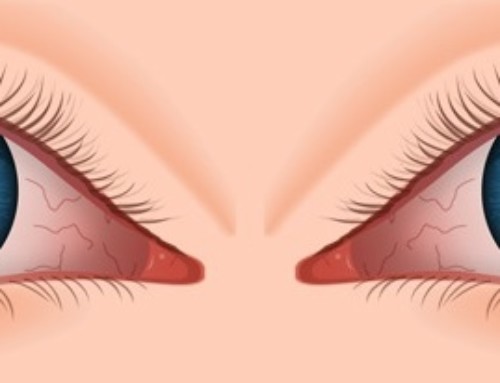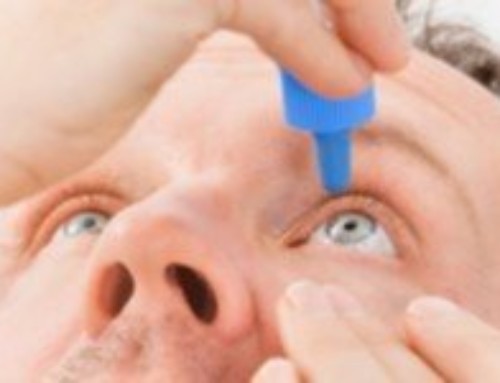Pink Eye Facts 
Pink eye is one of the most common and treatable eye conditions in children and adults; about 3 million cases of pink eye occur in the United States each year. Treatment is not always needed and the course of treatment depends on the underlying cause.
What is Pink Eye?
Pink eye, also known as conjunctivitis, involves inflammation of the conjunctiva, the thin, clear tissue that lines the inside of the eyelid and covers the white part of the eye, or sclera. The inflammation makes blood vessels more visible, giving the eye a pink or reddish appearance. The affected eye(s) may be painful, itchy or have a burning sensation. The eyes can also tear or have a discharge that forms a crust during sleep causing the eyes to be “stuck shut” in the morning. Other signs or symptoms that may accompany pink eye include:
- Swelling of the conjunctiva
- Feeling like a foreign body is in the eye(s)
- Sensitivity to bright light
- Enlargement and/or tenderness of the lymph node in front of the ear. This enlargement may feel like a small lump when touched. (Lymph nodes act as filters in the body, collecting and destroying viruses and bacteria.)
- Contact lenses that do not stay in place on the eye and/or feel uncomfortable due to bumps that may form under the eyelid.
What Causes Pink Eye?
Pink eye is most often caused by bacterial or viral infections. Allergic reactions or exposure to irritants can also cause pink eye. Pinpointing the cause may be difficult because the signs and symptoms tend to be similar regardless of the underlying cause.
Viral conjunctivitis is caused by a wide variety of viruses, but adenovirus and herpesvirus are the most common viruses that cause pink eye. Viral conjunctivitis may also occur along with an upper respiratory tract infection, cold, or sore throat. Viral conjunctivitis is often diagnosed based on a person’s history and symptoms. It tends to occur in both eyes and often accompanies a common cold or respiratory tract infection. Laboratory tests usually are not needed to diagnose viral conjunctivitis; however, testing may be done if a more severe form of viral conjunctivitis is suspected. More severe causes include herpes simplex virus (which usually involves blisters on the skin), varicella-zoster virus (chickenpox and shingles), rubella or rubeola (measles). This testing is performed using a sample of the discharge from an infected eye.
Bacterial conjunctivitis is caused by infection of the eye with bacteria such as Staphylococcus aureus, Streptococcus pneumonia, or Haemophilus. It is a common reason for children to stay home sick from day care or school. Bacterial conjunctivitis tends to occur in one eye and may accompany an ear infection. A sample of the discharge from the affected eye may be obtained for laboratory tests to determine which type of bacteria is causing the pink eye and how best to treat it.
Allergic conjunctivitis can be caused by allergies to pollen, dust mites, molds, or animal dander. Allergic conjunctivitis tends to occur in both eyes and often accompanies allergy symptoms, such as an itchy nose, sneezing, and scratchy throat. Allergic conjunctivitis may occur seasonally when pollen counts are high, and it can cause the person’s eyes to itch intensely. A detailed health history may help determine the source of the allergic reaction.
Irritants such as contact lenses and lens solutions, chlorine in a swimming pool, smog or cosmetics may also be an underlying cause of conjunctivitis.
How is Pink Eye Treated?
Most cases of pink eye are mild and will resolve on their own without prescription treatment. In many cases, symptom relief can be achieved by using artificial tears for the dryness and cold packs for the inflammation. (Artificial tears can be purchased without a doctor’s prescription.)
However, you should seek medical attention if you have any of following symptoms:
- Moderate to severe pain in the eye(s)
- Vision problems, such as sensitivity to light or blurred vision, that do not improve when any discharge present is wiped from the eye(s)
- Intense redness in the eye(s)
- Symptoms that become worse or persist when severe viral conjunctivitis is suspected
Also seek medical attention if you have signs of conjunctivitis and you have a weakened immune system from HIV infection, cancer treatment, or other medical conditions or treatments.
Viral Conjunctivitis:
Most cases of viral conjunctivitis are mild and will clear up in 7–14 days without treatment and without any long-term consequences. In some cases, however, viral conjunctivitis can take two or more weeks to resolve, especially if complications arise.
Antiviral medication can be prescribed by a physician to treat more serious forms of conjunctivitis, such as those caused by herpes simplex virus or varicella-zoster virus. Antibiotics will not improve viral conjunctivitis as these drugs are not effective against viruses.
Bacterial Conjunctivitis
Mild bacterial conjunctivitis may get better without antibiotic treatment and without causing any severe complications.
Antibiotics can help shorten the illness and reduce the spread of infection to others. Your healthcare provider may prescribe antibiotic eye drops or ointment, which should resolve the infection within several days.
Consult your healthcare provider if you have been given antibiotics for bacterial conjunctivitis and symptoms have not improved after 24 hours of treatment.
Allergic Conjunctivitis
Conjunctivitis caused by an allergy usually improves by eliminating or significantly reducing contact with the allergen (such as pollen or animal dander). Allergy medications and certain eye drops can also provide relief.
Conjunctivitis caused by an irritant often clears up by eliminating the irritant. If you develop conjunctivitis and you wear contacts, stop using them temporarily until the conjunctivitis resolves. In some cases, your healthcare provider may also prescribe drug treatments to improve symptoms.
Courtesy: National Eye Institute, National Institutes of Health (NEI/NIH)






